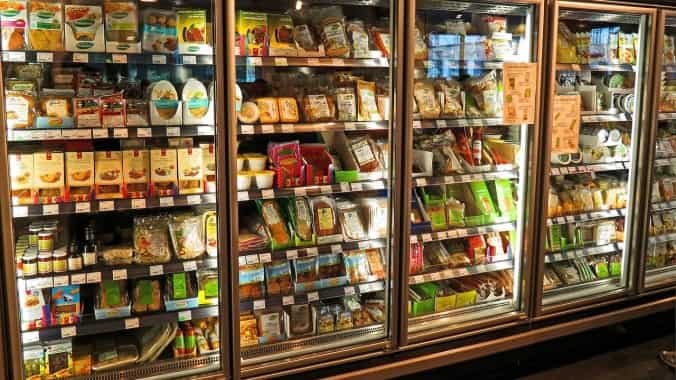Free Market Economics: 15 Examples
The idea behind a free market economy is that it allows for maximum efficiency, innovation, and economic growth by encouraging competition and individual choice.
The pillars of a free market economy include: competition, private property, voluntary exchange of goods and services, a transportation infrastructure, incentives or profits, the invisible hand, a transparent legal system, a stable currency, and laissez-faire (minimal government intervention), among others.
These examples highlight some issues such as: pricing, product or service differentiation, advertising and marketing, distribution, innovation, among others.
Market Economy Examples
These are all examples from everyday life.
The agricultural market
The Chicago Mercantile Exchange, a market for agricultural products, allows farmers to sell their crops where prices are determined by global supply and demand factors.
Construction Companies
Construction companies compete for new projects by bidding on contracts, offering the lowest price and guaranteeing quality work. This bidding process is a free market approach in which companies compete with each other to offer the best price and the highest quality work.
Pharmaceuticals
When new drugs come on the market, they are initially offered to the public at very high prices. This is partly to cover the costs of research and development, but it is also based on supply and demand.
For their new and innovative drugs, which have no direct competitors, pharmaceutical companies can charge a premium.
Over time, as other similar drugs enter the market or patents expire, prices tend to fall.
Confectionery Companies
New confectionery companies are constantly emerging to gain market share.
As companies innovate and compete to attract new customers and sell more confectionery, the industry continues to evolve.
While this free competition can challenge established companies, it keeps the industry efficient and responsive to the demands of younger consumers. Companies that cannot compete tend to go out of business.
Dairy companies
The price dairy companies pay farmers for raw milk is based on supply and demand.
This means that dairy companies have to pay higher prices to get the milk they need when demand for milk is high and supply is low.
But when supply exceeds demand, milk prices fall and dairies pay lower prices.
And companies may respond by raising prices to maintain profit margins when their input costs rise.
 Image by Kevin Phillips from Pixabay
Image by Kevin Phillips from Pixabay
This generally affects the retail price of milk.
The Fishing Industry
Many countries have fishing quotas and catch limits set by the government that affect the amount of fish that can be supplied to the market.
For example, in some seasons when quotas are lower, there are fewer fish available, which can drive up prices.
In order to remain profitable, fishing companies must adapt to these regulations as well as fluctuations in demand and input costs.
Shoe factories
There are shoe factories that specialize in producing certain types of shoes, such as orthopedic boots, which are rare. Since there are no direct competitors in a free market, these boots can have a very high price as long as some people can afford them.
The free market economy is the greatest source of human progress ever conceived.Milton Friedman.
Car companies
In a free market economy, car companies can advertise their vehicles in any way they see fit. Most use television commercials, billboards, social media, or other means to promote their cars and attract customers.
Soft Drink Companies
All of these non-natural soft drink companies compete in the same general market, but they effectively differentiate themselves through brand positioning, marketing, and product attributes in order to attract different types of customers.
Agricultural Insurance
Purchasing insurance is a market-based solution to managing risk in agriculture.
Farmers purchase crop-based insurance from financial institutions to protect themselves against the risk of crop failure caused by weather, pests or other factors; the cost of the insurance premium is based on the expected crop yield.
Discover even more about Free Market Economy: 14 advantages and 13 disadvantages.
Leasing land for cultivation
Farmers lease land from landowners for cultivation. The price is determined by supply and demand in the local market and is negotiated between the farmer and the landowner.
Farmers and buyers
In Guatemala, it is common for farmers to contract with buyers to grow certain crops in exchange for a fixed price. The terms of the contract are negotiated between the farmer and the buyer.
This allows free market principles to determine the price and terms of the contract.
In a free market, people are incentivized to create value for others, leading to greater prosperity for all.Thomas Sowell.
Pharmaceuticals
In order to increase demand, pharmaceutical companies advertise their cough medicines to most doctors and individuals. They spend a lot of money on marketing and advertising.
Using free market principles, these companies try to differentiate the drug and convince consumers to buy it.
Recruitment
In a free market economy, companies can hire and fire employees according to their needs and performance, so if a company plans to open more branches in the country, it may need to hire more employees, while if it has to reduce its staff due to force majeure, it may have to lay off employees.
During a recession
During an economic downturn, there may be a drop in demand for new housing projects, resulting in less work for construction companies and a need for them to lower their prices in order to win the few contracts that are available.
Some may go out of business if the recession is severe and prolonged.
This illustrates how free market boom and bust cycles can affect commerce.